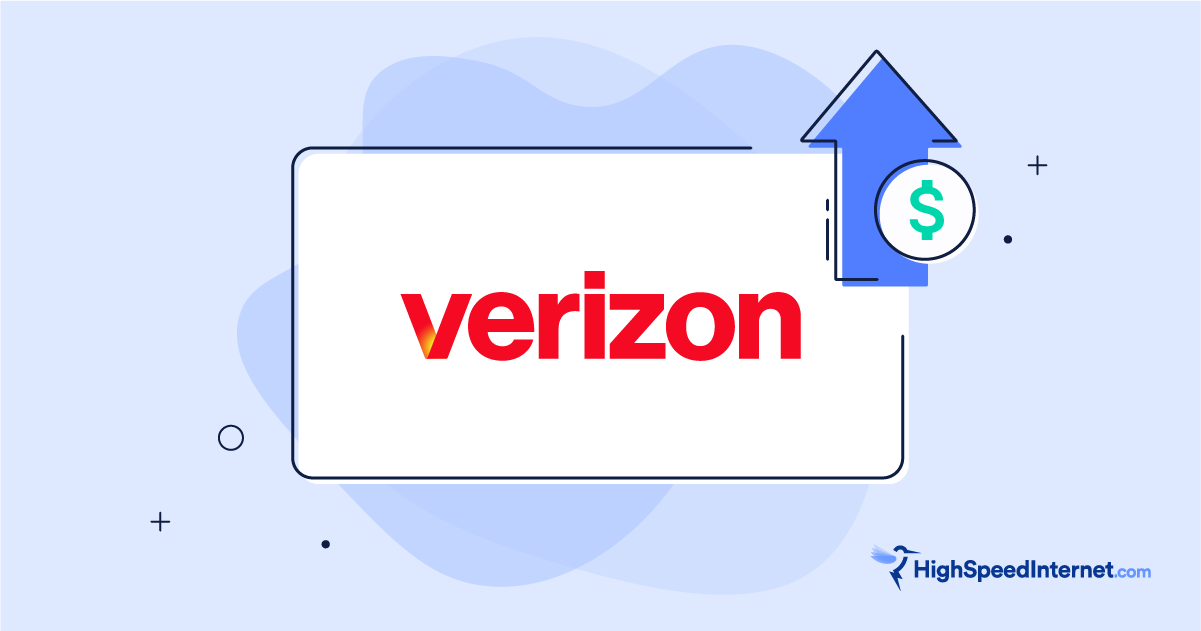What is Hughesnet Fusion?
Best of both worlds or modem mishmash?
Dec 2, 2025 | Share
Brand Guides
Hughesnet Fusion combines a satellite internet connection with a terrestrial wireless connection. This new approach addresses the biggest problem facing satellite internet—the incredibly high latency that comes from sending your data tens of thousands of miles into space and back.
Fusion customers receive additional equipment that automatically connects to nearby wireless networks when doing latency-sensitive activities like playing games or using video chat, greatly reducing lag. Meanwhile, data that isn’t latency sensitive is sent via satellite, allowing the service a much wider reach than a purely terrestrial wireless service.
Are you a new or current Hughesnet customer thinking about upgrading to Fusion?
Click to see if these plans are available in your location.
On this page:
Where is Fusion available? | Hughesnet Fusion plans and pricing | Why hybrid networks? | Fusion vs Starlink | Fusion vs Satellite | Fusion vs wireless | The bottom line | FAQs
On this page:
Where is Hughesnet Fusion Available?
Hughesnet Fusion plans are available in select areas of the continental US, though not in every area with Hughesnet service. There are some exceptions within Hughesnet’s normal coverage area due to signal strength that have to be evaluated on a case-by-case basis.
For example, if you live in a cozy cabin located in a deep, south-facing canyon, you might have a great signal from an orbiting satellite, but be completely blocked from wireless networks. These exceptions are rare, but they do happen. If you’re not sure if you’re in an area where Hughesnet Fusion is available, you can find out here .
Although your Hughesnet satellite system must be set up by a certified technician, customers who choose to upgrade their existing satellite-only plan to a Fusion plan have the option of a self-install.
Hughesnet Plans and Pricing
| Plan | Price* | Speed | Data cap |
|---|---|---|---|
| Lite | $39.99/mo.* for first 12 mos. | Up to 25Mbps (stated speeds are not guaranteed) | Unlimited |
| Select | $49.99/mo.* for first 12 mos. | Up to 50Mbps (stated speeds are not guaranteed) | Unlimited |
| Elite | $64.99/mo.* for first 12 mos. | Up to 100Mbps (stated speeds are not guaranteed) | Unlimited |
| Fusion | $94.99/mo.* for first 12 mos. | Up to 100Mbps (stated speeds are not guaranteed) | Unlimited |
Data as of 09/04/2025. Offers and availability may vary by location and are subject to change. See disclaimers.
Hughesnet offers a Fusion plans with unlimited data and has a download speed of 100Mbps. The satellite-only plans have download speeds of 25 and 100Mbps. The amount of data you need in a given month is a big consideration when choosing a plan and whether or not you want Fusion for low-latency data.
Why create a hybrid satellite network like Hughesnet Fusion?
Multitransport internet connections like Hughesnet Fusion aren’t anything new—businesses have long relied on these kinds of hybrid networks to avoid service interruptions.
Hughesnet Fusion takes these proven technologies and uses them to address the problems that residential satellite internet customers face, especially latency. Latency is the time it takes for a signal to travel from your computer to a remote server and back, and it’s very important in real-time activities like games, livestreaming, and video chat. While issues like download speed and reliability could be improved by more satellites or better technology, latency is caused by the physical distance the signal must travel, making it an inevitable part of using geostationary (GSO) satellites.
One solution to this problem, used by providers like Starlink and Amazon’s Project Kuiper, is to use low-Earth orbit (LEO) satellites. By simply moving the satellites closer to Earth, latency can be reduced to a fraction of what it would be in geostationary orbit. The downside is that instead of one or two satellites servicing an entire continent, these systems require thousands of satellites working in a complex constellation.
Hughesnet Fusion deals with latency by making use of terrestrial wireless networks for latency-sensitive data. This means that if you make a Zoom call or turn on a Twitch stream, your Hughesnet equipment will switch over to a wireless connection in order to deliver that data to your device without the lag you’d get using your satellite connection.
Like LEO satellites, hybrid satellite internet like Hughesnet Fusion could be a game changer for rural communities without access to cable or fiber internet.
Hughesnet Fusion vs Starlink
| Provider | Price | Speed | Data cap | Order online |
|---|---|---|---|---|
| Hughesnet Fusion | $94.99/mo.* for first 12 mos. | Up to 100Mbps (stated speeds are not guaranteed) | Unlimited | |
| Hughesnet Satellite-only | $39.99–$64.99/mo.* for first 12 mos. | 25–100Mbps (stated speeds are not guaranteed) | Unlimited | |
| Starlink | $40–$165/mo.† | Up to 400Mbps | Unlimited | View Plans |
Data as of 12/02/2025 Offers and availability may vary by location and are subject to change. See disclaimer.
Hybrid satellite and LEO satellites address the same problem, why choose something like Hughesnet Fusion over Starlink? There are three main arguments in favor of hybrid satellite:
- Lower cost
- Proven Technologies
- More reliable connection
Hughesnet Fusion vs. Starlink price comparison
One of the most common arguments for Hughesnet fusion is the lower cost when compared to services like Starlink. Hughesnet has always been one of the more affordable satellite options, directed toward underserved rural communities. Starlink, by contrast, has primarily marketed itself toward technophiles looking to be on the bleeding edge of internet technology—an attitude that is reflected in its much more complicated solution to the same technical problem.
Despite its different approach, the claim that Hughesnet fusion is the affordable alternative to Starlink is somewhat dubious. With the cheapest Fusion plan starting at $94.99 and moving up to $124.99 after a year. Once you add in equipment rental and additional price points, Hughesnet Fusion and Starlink seem pretty comparable on price.
There are still some important differences between the two in terms of pricing. For example, Hughesnet’s monthly equipment rental fee for its Fusion equipment is probably a lot easier for many households to deal with than Starlink’s massive upfront equipment cost, plus the promotional discount makes it even easier to get started. Still, if saving money is your primary motivation for getting Hughesnet Fusion, we don’t think that’s a good enough reason on its own to switch.
Hughesnet Fusion uses more proven technologies
A more compelling reason to choose Hughesnet Fusion over Starlink is that both GSO satellite internet and fixed wireless internet are technologies that have been around for decades, whereas LEO satellites are still pretty new to the scene.
To be fair, Starlink has managed to overcome the most daunting technological challenges to LEO satellite internet years ahead of its competitors. As a part of SpaceX, it was able to rapidly build its satellite constellation from its two initial test satellites in 2018 to 3,232 operating satellites as of November 2022.1 Despite its successes, Starlink faces problems as its network performance continues to drop—an issue that ultimately forced the company to abandon the unlimited data policy that it initially launched with.2
The bigger issue is less about how much Starlink knows about making good satellites and more about how much it knows about being an internet service provider. At the moment, Starlink is doing better at getting its equipment into orbit than it is at getting its equipment to customers in Massachusetts.3
Hughesnet, on the other hand, has been competently operating a globe-spanning digital communications network for 50 years. Hughesnet Fusion’s nationwide rollout is scheduled to be complete in just a few months, at which time people who signed up for Starlink this summer will likely still be waiting for their dish to arrive.
Hughesnet Fusion provides a more reliable connection than Starlink
A final advantage of Hughesnet Fusion’s hybrid approach is that your connection has built in redundancy to ensure a reliable online experience. All wireless communication is vulnerable to interference from weather, and satellite doubly so. Even if it’s clear skies on your end, heavy rain at the satellite ground station could still interrupt your connection.
With a system like Hughesnet Fusion, the wireless network can compensate for interference in your satellite connection and vice versa. This is still not as reliable as a wired connection like fiber, but it’s definitely one of the best defenses against service interruption you can get with wireless internet.
Hughesnet Fusion vs Viasat and Hughesnet satellite-only
| Provider | Price | Speed | Data cap | Order online |
|---|---|---|---|---|
| Hughesnet Fusion | $94.99/mo.* for first 12 mos. | Up to 100Mbps (stated speeds are not guaranteed) | Unlimited standard data | |
| Hughesnet Satellite-only | $39.99–$64.99/mo.* for first 12 mos. | Up to 25–100Mbps (stated speeds are not guaranteed) | Unlimited standard data | |
| Viasat | $119.99/mo.‡ | Up to 150Mbps | Unlimited data |
Data as of 09/04/2025 Offers and availability may vary by location and are subject to change. See disclaimer.
Current Hughesnet customers who upgrade to Hughesnet will be sent a second router that plugs into their current Hughesnet router. Unlike your main router which has to be plugged into the outdoor satellite dish, the router for your wireless connection attaches to a smaller indoor antenna that can be placed near a window.
Current customers can install this new equipment themselves. For new Hughesnet customers, installation of this new equipment comes included in your normal Hughesnet installation.
Fusion plans have a higher monthly cost than standard Hughesnet plans, starting at $94.99. The second router also comes with an additional equipment rental fee, so these recurring monthly costs add up.
Even though your data comes through two separate networks, the way you manage your data doesn’t change. Data is still deducted from your monthly quota, regardless of whether it comes by way of satellite or cell tower. Bonus Zone data, data tokens, and download speed are unaffected by the change. The only difference in your monthly experience is the lower latency, the increased reliability, and, of course, the change to your monthly bill.
Although Hughesnet Fusion provides a smoother, snappier online experience by lowering latency, this does not change your actual download speed. This means that for those in rural areas who want a faster connection, Viasat might be a better option. Just be aware that although Viasat is faster, it still comes with the lag caused by an incredibly high latency satellite connection.
Hughesnet Fusion vs 4G home internet
| Provider | Price | Speed | Order online |
|---|---|---|---|
| Hughesnet Fusion | $94.99/mo.* for first 12 mos. | Up to 100Mbps (stated speeds are not guaranteed) | |
| Hughesnet Satellite-only | $39.99–$64.99/mo.* for first 12 mos. | 25–100Mbps (stated speeds are not guaranteed) | |
| Verizon 5G Home Plus | $70/mo.§ | Up to 1000 Mbps | View Plans for Verizon Home Internet |
| T-Mobile All-In Home Internet | $70/mo.║ | 133–415Mbps | View Plans |
Data as of 09/04/2025 Offers and availability may vary by location and are subject to change. See disclaimer.
Since the wireless half of Hughesnet fusion brings so much to the party, why not just go with a simple (and cheaper) 4G LTE home internet plan? Turns out there are still two good arguments for Hughesnet Fusion:
- Wider availability
- More reliable connection
Hughesnet Fusion offers wider availability
The biggest selling point that satellite internet has over other types of wireless networks is that although technologies like 4G are widespread, there are still underserved areas where satellite is the only option. If you’re using a hybrid satellite/wireless service, why not just switch to 4G?
A subtle but important difference between mobile 4G and home 4G is that just because a provider offers cell service in an area doesn’t mean that you can get home internet from the same provider. The only reason providers can offer home 4G with faster speeds and lower monthly cost than their own mobile plans is because they only offer home 4G in areas where their networks have bandwidth to spare. While your phone might still get adequate service on the edges of your provider’s network, that signal isn’t strong enough to provide home internet.
Unlike a traditional wireless network, Hughesnet Fusion doesn’t need to rely on its wireless half for 100% of its bandwidth. That means that it can make use of the weaker signals that aren’t strong enough to deliver a home internet connection on their own. By partnering with multiple wireless providers, Hughesnet anticipates that it will be able to offer Hughesnet fusion to nearly all of its customers in the continental US, even in remote locations.
Hughesnet Fusion is available in every area of the continental US, though certain homes that have good satellite connections might not get other wireless signals (sad times for those who live in deep, south-facing canyons). To find out if your home can upgrade to a Fusion plan, click the button below.
Hughesnet Fusion is more reliable than 4G internet
Hughesnet Fusion’s built-in backup gives it an advantage over other wireless plans when it comes to reliability. 4G networks are still fairly reliable and aren’t as vulnerable to interruption as satellite networks, but having a backup with the Hughesnet Fusion network is still helpful, especially if you work from home.
The bottom line
Geostationary satellite internet is typically slower and less reliable than other internet connections, but it’s often the only option in certain areas. The Hughesnet Fusion plan combines satellite and wireless technologies to improve users’ experience with browsing, streaming and video-conferencing.
This new plan is Hughesnet’s answer to LEO satellites like Starlink. Although there’s nothing particularly new about the technology it uses, Fusion seems to be a practical alternative to this new generation of satellites. It’s a pricey upgrade, but well worth it for those in rural areas who want a more reliable internet experience.
Hughesnet Fusion FAQs
Where are Hughesnet Fusion plans available?
Does this service include cellular phone service?
Do I need a separate wireless plan to use Hughesnet Fusion?
What is the difference between Hughesnet Fusion plans and satellite-only plans?
Sources
- Jonathan C. McDowell, Jonathan’s Space Pages, “Starlink Statistics,” November 30, 2022. Accessed December 1, 2022.
- Aaron Leong, DigitalTrends, “Why Starlink download speeds are experiencing double-digit dips,” November 30, 2022. Accessed December 1, 2022.
- Kate Duffy, Business Insider, “SpaceX’s Starlink User Growth Dropped in December As Some Preorder Customers Became Frustrated Over Waiting 11 Months for the Internet Service,” January 7, 2022. Accessed December 1, 2022.
Disclaimers
Hughesnet plans
* Minimum term required and early service termination fees apply. Monthly Fee reflects the applied $5 savings for ACH enrollment. Offer may vary by geographic area.
Hughesnet vs. the competiton
* Minimum term required and early service termination fees apply. Monthly Fee reflects the applied $5 savings for ACH enrollment. Offer may vary by geographic area.
† Starlink
- Plus hardware, shipping & handling fees, and tax. Fully refundable. Depending on location, some orders may take 2 weeks or more to fulfill.
- Users on Mini Roam are limited to 50GB of Mobile Data and can use in-motion beyond 100mph
‡ Viasat
- Prices and speeds vary upon location. Offer available to new qualifying customers. One-time standard installation fee may be due at checkout. Minimum 24-month service term required. Equipment lease fee is $14.99/mo. Taxes apply. Speeds are “up to,” will vary and are not guaranteed. Service is not available in all areas. Offer may be changed or withdrawn at any time.
- Prices, speeds and availability vary by location. Prices are subject to change. No annual contract or installation fees are required. Monthly equipment lease fees and taxes may apply.
§ w/ Auto Pay. Available in select areas. Some prices require select 5G mobile plans. Consumer data usage is subject to the usage restrictions set forth in Verizon’s terms of service; visit: https://www.verizon.com/support/customer-agreement/ for more information about 5G Home and LTE Home Internet or https://www.verizon.com/about/terms-conditions/verizon-customer-agreement for Fios internet.
║ w/ Auto Pay. Regulatory fees included in monthly price for qualified accounts. See full terms.
Author - Peter Christiansen
Peter Christiansen writes about telecom policy, communications infrastructure, satellite internet, and rural connectivity for HighSpeedInternet.com. Peter holds a PhD in communication from the University of Utah and has been working in tech for over 15 years as a computer programmer, game developer, filmmaker, and writer. His writing has been praised by outlets like Wired, Digital Humanities Now, and the New Statesman.




